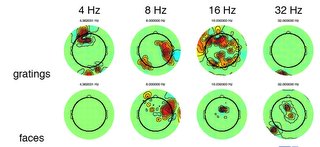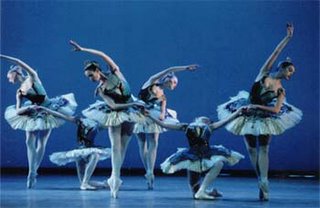I spent the weekend in New York City, attending the mind and reality conference. It was really interesting, in many aspects. Not only was the level of discussion about the nature of consciousness (mainly) really high, but also was it interesting to observe the sociology of knowledge. I was surprised at what a language gap there seemed to be between the (neuro)scientists, who tend to speak the language of data, the philosophers, who communicate through mention of different theories and previous philosophers, and Buddhist scholars, who pepper their conversations with lots of Sanskrit/Pali/Tibetan terms. It was quite obvious that we are in dire need for translators, even though some of the speakers did quite a good job at trying to make some steps in translating themselves, which was one of the more interesting things at the conference. Probably a more focused conference, restricting itself for example to the nature of consciousness and trying to discuss the differences and similarities from neurobiological, philosophical and Buddhist perspectives would be more productive. Nevertheless, it was impressive to have so many great minds together. I especially enjoyed the talks about phenomenology by for example Evan Thompson, trying to link a complex systems approach to neuroscience in order to suggest that there is not a separate mind and body, but rather they are co-emergent. A similar point was made in a very interesting essay by William Waldron. I think this is a very fruitful approach, though hard to turn into science. How can we come up with models that are so complex that they represent this co-emergence phenomenon, the necessary nonlinearity of the system?
The next day of that weekend was quite a turn when I attended a rigpa sangha gathering, which operated from quite a different perspective. Sogyal Rinpoche tends to bring the teachings from the direct experience, or from the heart of things, and only then the intellect comes in, whereas at the mind and reality conference most was done from the approach of the intellect, except for a little bit during the presentation of Piet Hut, who encouraged the listeners to experience the world in different ways, demonstrating the phenomenological approach quite beautifully. Anyway, I think it is fruitful to have both, and I wish that personal experience were used more by neuroscientists. who are after all trying to understand how the brain produces cognition.
I am a computational cognitive neuroscientist, who also happens to be a Tibetan Buddhist practitioner and an amateur ballet dancer. In this blog I muse about topics at the intersection of these things. #ballet #neuroscience #mindfulness

Monday, February 27, 2006
Thursday, February 23, 2006
faces!

These days I have been working mainly on studies of face spaces, face association and face recognition. In the picture above you can see some sample of my faces. They are hard to recognize, aren't they! I think what is really cool is that we can figure out how the face space of people is represented in their heads, using what is called 'multidimensional scaling'. Trying out different algorithms is one of the things I have been doing lately.
The new year in the Tibetan calendar will start next Tuesday, the 28th. A good time to make some new resolutions about practice, and integrating practice in daily life. Isn't it amazing how often we simply get lost in our thoughts and emotions, and think that is really us? We take our thoughts so seriously, whereas if we simply see we get irritated because we feel somebody is impeding us, the irritation just subsides (at least in my experience). I am hoping that in the new year I will be able to remind myself a little bit more often of these simple facts about my mind, making me hopefully a little happier and less stressed ;-)
Saturday, February 11, 2006
craziness

scienceThis week was the first exam for the class I am TAing and it was quite intense: grading 90 exams with 6 essay questions each... And then managing to give a talk too! The picture below is actually one from the talk I gave, showing correlations between summed similarity and activity in different oscillatory bands. The summed similarity is the quantity we believe people compute during a task in which they are asked to say whether they have seen the image in the list of images that was shown a few seconds before. The task is quite hard but my subjects can do it, and their brain activity shows interesting oscillatory patterns during that period. The graph on the left shows for every set of my stimuli the probability that subjects will say "yes", it was in the list as a function of this summed similarity they are computing, and on the brain plots on the right you see the correlation of this summed similarity with the oscillatory power at different frequencies, some time after the probe item was shown. Isn't that cool?

ballet Today I went to ballet class which was again a lot of fun because we actually danced some variations. I was also asked to perform in next year's Nutcracker so I hope I'll be able to actually do that and find time to rehearse. Life is so exciting!
dharma
Next week there will be a very interesting conference at Columbia University in New York, where scientists and philosophers will talk about the nature of consciousness, and its studies using neuroscience and Buddhist contemplation. Check out their blog
Saturday, February 04, 2006
ballet excitement!

A lot of ballet excitement has been going on: last week was the Prix de Lausanne, one of the most prestigious ballet competitions. They always put the videos of the finals online, which is a great joy to watch. Check out www.prixdelausanne.org.
Last week in class I was for the first time ever able to do 4 fouettes on pointe - woohoo! Ballet is always a challenge, which makes it so exciting!
I also went to see the Pennsylvania Ballet in a set of three Balanchine ballets: Theme and Variations, a very nice technical piece, during which the dancers simply become the music (the picture shows the Mariinsky Ballet in this piece); The Prodigal Son, a story ballet that lacked some depth in my opinion but the depiction of the protagonist was beautiful: from a party animal he turned into a broken man. Also the partnering in this ballet was quite challenging. The third ballet was Western Symphony, which I think must be a joy for the dancers to dance: finally some swinging, yet combined with some challenging leaps and turns. Balanchine really WAS a genious, being able to produce such dramatically different ballets, yet all very good.
Subscribe to:
Comments (Atom)